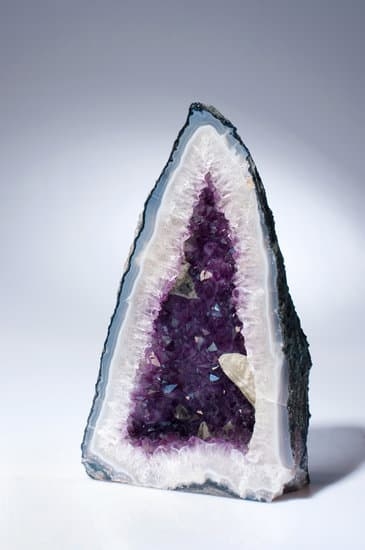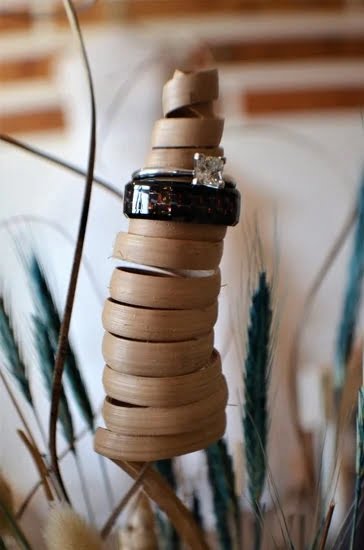Amber jewelry holds a rich history that spans back thousands of years, captivating individuals with its timeless beauty and mystical allure. From its ancient origins to its influence on artistic movements, amber has played a significant role in human culture across the globe. In this article, we will delve into the fascinating journey of amber jewelry through the ages, unearthing its origins, exploring its mythological significance, tracing historical trade routes, and admiring its revival during the Renaissance period.
We will also examine the influence of amber in artistic movements such as Art Nouveau and Art Deco, and shine a spotlight on contemporary designers who continue to create stunning pieces using this exquisite gemstone. Join us as we embark on a journey to appreciate the enduring legacy of amber jewelry.
Unveiling the Origins
Amber is a gemstone that has been treasured and admired for centuries, and its history in jewelry dates back to prehistoric times. In this section, we will delve into the earliest known use of amber in jewelry, as well as highlight archaeological discoveries and ancient civilizations that greatly valued amber for adornment.
The use of amber in jewelry can be traced back to as early as the Stone Age. Archaeological excavations have revealed the presence of amber beads and pendants in burial sites from this era, indicating that it held both cultural and symbolic significance to these prehistoric communities. For example, a tomb dating back to 8,000 BCE was discovered in Denmark with burial objects made of amber.
Ancient civilizations also recognized the beauty and allure of amber. The Egyptians believed that amber had protective qualities and used it in amulets and jewelry. The Greeks revered amber for its connection to their sun god, Apollo, and used it in various forms of adornment. The Romans also cherished amber, importing large quantities from Baltic regions for their own personal adornment.
| Prehistoric Amber Jewelry Discoveries |
|---|
| Stone Age burial sites with amber beads and pendants |
| Egyptian use of amber in amulets and jewelry |
| Greek reverence for amber connected to Apollo |
| Roman importation of Baltic region amber for personal adornment |
The popularity of amber continued to grow throughout history, with different cultures developing unique styles and techniques when working with this captivating gemstone. Amber carving became highly sophisticated during the Bronze Age, showcasing intricate designs such as animals and mythological figures. During the Middle Ages, Baltic amber in particular held significant value and was traded extensively along the famous Amber Road, a major trade route connecting northern Europe with the Mediterranean.
Amber in Myth and Legend
Amber’s captivating beauty has not only attracted the admiration of countless civilizations throughout history but also inspired a myriad of mystical beliefs and legends surrounding this precious gemstone. Across different cultures and mythologies, amber has been revered as a talisman with powerful protective qualities and associated with various magical properties.
In ancient Roman mythology, it was believed that amber held the power to calm storms at sea. Sailors would often wear pieces of amber jewelry as amulets to ensure safe voyages and protection from perilous weather conditions. Additionally, Greeks attributed amber’s origin to the tears shed by the sisters of Phaeton, the god of the sun. These myths contribute to its symbolic association with divine energy and light.
Amber also holds great significance in Nordic mythology, where it was considered to be solidified sunlight fallen from the trees onto the ground. The Norse people believed that wearing amber jewelry could provide courage and strength during battles or hunts. It was even believed that dragons were attracted to amber, further magnifying its mystical allure.
Unveiling such mythical beliefs and legends adds an enchanting layer to the history of amber jewelry. Its association with protection, healing properties, and divine energy make it a truly enchanting gemstone. As we explore further into the rich history of amber jewelry, these tales not only highlight its past significance but also emphasize its timeless appeal in contemporary designs.
If you are fascinated by folklore and mythical symbolism, consider adding a piece of amber jewelry to your collection-carry with you a piece of history drenched in magic. Let us take this journey together to unmask more secrets surrounding this captivating gemstone throughout different cultures around the world.
The Amber Road
The Amber Road, also known as the Amber Trade Route, was an ancient network of trade routes that facilitated the transportation of amber and other valuable goods. This trade route served as a vital link between regions abundant in amber, such as the Baltic Sea region, and destinations where it was highly sought after for its beauty and perceived mystical properties.
The origins of the Amber Road can be traced back to around 1600 BCE when the demand for amber began to increase. The main source of amber during this time was the Baltic Sea coast, particularly areas now known as Poland and Lithuania. The precious stone was highly valued by civilizations such as the Ancient Greeks, Romans, Egyptians, and Phoenicians.
The trade routes of the Amber Road extended from Northern Europe to countries located along the Mediterranean Sea. It connected various cities and regions across Europe, including present-day Germany, Czech Republic, Austria, Italy, Greece, and Turkey. Along these routes, traders would exchange not only amber but also other goods such as furs, metals, textiles, and exotic plants.
The establishment of the Amber Road had significant economic and cultural influences on both the regions involved in its trade and the development of amber jewelry. As amber became more widespread due to its availability through trading networks like the Amber Road, artisans in different cultures began incorporating it into their jewelry creations. This resulted in diverse styles of amber jewelry emerging across various civilizations.
The historical significance of the Amber Road lies in its role in facilitating cultural exchange between different peoples around Europe. It not only enabled the distribution of valuable commodities but also allowed for a transfer of ideas and artistic inspiration. Today, we can still appreciate this ancient trade route’s impact on amber jewelry by exploring pieces that showcase rich historical influences from different parts of Europe.
Golden Eclipses
During the Renaissance period, amber jewelry experienced a remarkable revival and gained immense popularity among the European nobility. This section will delve into the factors that contributed to the resurgence of amber jewelry during this time, as well as highlight some exceptional examples of craftsmanship from this period.
Revival of Amber Jewelry
The Renaissance, which spanned from the 14th to the 17th century, was a period characterized by renewed interest in classical culture, art, and science. The exploration and trade routes established by navigators like Christopher Columbus led to an influx of exotic materials and gemstones from different parts of the world. Among these treasures was amber, which captivated the imaginations of craftsmen and designers with its vibrant colors and unique properties.
Amber jewelry became especially favored among the European nobility, who saw it as a symbol of wealth and power. The warm hues and translucency of amber perfectly complemented their opulent attire and reflected their status. Nobles sought out artisans skilled in creating intricate designs using amber to showcase their sophistication and discerning taste.
Intricate Craftsmanship
During this Renaissance period, magnificent examples of amber craftsmanship were created by highly skilled artists. One such example is decorative amber necklaces, which featured meticulously carved beads made from large chunks of amber. These necklaces often incorporated gold accents or gemstones to further enhance their beauty.
Amber brooches also gained popularity during this era. These brooches were typically crafted with intricate metalwork settings that showcased smaller pieces or fragments of amber in stunning designs. Intricate amulets crafted in various shapes like animals or human figures were also prevalent during this time, reflecting the prevalent belief in protective qualities attributed to amber.
Overall, the revival of amber jewelry during the Renaissance highlighted not only its aesthetic appeal but also its symbolic significance as a representation of wealth, power, and refined taste. The craftsmanship and creativity of artisans during this period continue to inspire contemporary designers and collectors today.
Amber in Artistic Movements
Amber in Art Nouveau
During the late 19th and early 20th centuries, a dynamic art movement known as Art Nouveau swept across Europe. Characterized by its focus on natural forms and organic motifs, Art Nouveau was heavily influenced by the aesthetics of nature. As a result, amber jewelry became an integral part of this artistic movement, with artists incorporating the gemstone’s warm hues and unique textures into their designs.
Amber was highly prized for its ability to capture and reflect light, making it perfect for creating intricate pieces that showcased the movement’s emphasis on craftsmanship. Jewelry adorned with amber became synonymous with elegance and femininity during this time, with popular motifs including flowers, insects, and flowing lines reminiscent of vines or tendrils. These designs captured the essence of nature’s effortless beauty and complemented the overall aesthetic of Art Nouveau.
Amber in Art Deco
Following the demise of Art Nouveau, a new artistic movement emerged in the 1920s: Art Deco. In stark contrast to the flowing lines of its predecessor, Art Deco embraced geometric shapes, symmetry, and a sleek modernity. However, amber jewelry still managed to find its place within this bold and glamorous movement.
Amber continued to be featured in jewelry pieces during the Art Deco era but took on a different role than it did in Art Nouveau. Rather than being incorporated as intricately detailed focal points, amber now served as eye-catching accents amidst the clean lines and vibrant colors commonly associated with Art Deco designs. Cut into angular shapes such as squares or rectangles, amber provided a striking contrast against metal settings while still exuding warmth and charm.
The use of amber in both Art Nouveau and Art Deco exemplified how this gemstone could adapt to different artistic movements while maintaining its timeless appeal. Its versatility allowed artists to showcase their creativity, creating pieces that both celebrated the beauty of nature and embraced the boldness of modern design.
The Enduring Legacy
The influence of amber jewelry in artistic movements such as Art Nouveau and Art Deco continues to resonate today. The designs pioneered during these periods set the stage for contemporary artists to explore new interpretations of amber jewelry.
As we appreciate the intricate craftsmanship and innovation seen in amber pieces from bygone eras, it becomes evident that this gemstone has truly stood the test of time. Its ability to capture light, its warm colors, and its innate connection to nature have made it an enduring symbol of beauty throughout history.
With each passing generation, artisans continue to find inspiration in amber’s rich legacy, ensuring that its influence on artistic movements will continue to shape the future of jewelry design.
Contemporary Amber Jewelry
Amber jewelry, with its rich history and captivating allure, continues to be cherished by many today. In the world of contemporary jewelry design, artisans and designers are constantly finding new ways to revive the timeless beauty of amber. These modern-day craftsmen have embraced this ancient gemstone, using their creativity and innovative techniques to create stunning pieces that showcase amber in all its glory.
One of the remarkable aspects of contemporary amber jewelry is the diverse range of designs that can be found. From traditional, handcrafted pieces that pay homage to the past to avant-garde creations that push the boundaries of conventional jewelry, there is something for every style and taste.
Modern designers are not only focused on creating aesthetically pleasing jewelry, but also on pushing the boundaries of what can be achieved with amber as a material. Through experimentation and skillful craftsmanship, they have managed to fashion unique shapes, textures, and colors in their pieces. Some artisans incorporate other materials such as silver or gold into their designs to add contrast and enhance the beauty of the amber.
In addition to showcasing innovative techniques, contemporary amber jewelry also embraces sustainability. With growing concerns about environmental impact and ethical sourcing, many designers now prioritize using ethically sourced amber and implementing environmentally friendly practices in their production processes. This commitment to sustainability adds an extra layer of meaning and value to these modern pieces.
The revival of amber jewelry in contemporary times not only pays tribute to its historical significance but also breathes new life into this ancient gemstone. As more artisans continue to push the boundaries of creativity with their designs, we can look forward to witnessing even more stunning examples of contemporary amber jewelry that revitalizes its timeless beauty for generations to come.
Caring for Amber Jewelry
Preserving the Legacy of Amber Jewelry
Amber, with its unique beauty and historical significance, is a gemstone that deserves proper care to ensure its longevity. Caring for your amber jewelry not only preserves its natural luster but also safeguards its legacy for future generations. By following some practical tips and expert advice, you can maintain the allure of your amber pieces for years to come.
Cleaning Amber Jewelry
When it comes to cleaning amber jewelry, it’s important to remember that less is more. Harsh chemicals or abrasive cleaners can damage the delicate surface of amber. The best way to clean your amber jewelry is by gently wiping it with a soft cloth or using a mild soap and lukewarm water. Avoid soaking the jewelry or scrubbing it vigorously.
Storing Amber Jewelry
Proper storage is crucial for preserving the integrity of amber jewelry. Keep your amber pieces away from direct sunlight or extreme heat, as these can cause fading or discoloration over time. It’s advisable to store your amber jewelry in a soft fabric pouch or a lined jewelry box to protect it from scratches and keep it safe from any potential damage.
Maintaining Amber’s Beauty
To maintain the natural beauty of amber, it’s important to prevent prolonged exposure to chemicals such as perfume, hairspray, or lotions. These substances can dull the surface of the gemstone and affect its shine. Additionally, be cautious when wearing amber jewelry while bathing or swimming, as chlorine and saltwater can be harmful.
Conclusion
Amber jewelry has a rich and captivating history that spans across civilizations and time periods. From its ancient origins to its modern interpretations, amber jewelry has endured as a symbol of beauty and mystique. Throughout the ages, amber has been valued for its intricate craftsmanship, perceived magical properties, and unique golden glow.
Exploring the journey of amber jewelry through the ages allows us to appreciate its enduring allure and historical significance. Tracing back to prehistoric times, we unveil the origins of amber in jewelry and the archaeological discoveries that showcase its early use by ancient civilizations. The tales and beliefs surrounding amber in myth and legend reveal the mystical reverence given to this gemstone by different cultures.
The Amber Road played a pivotal role in the development of amber jewelry, intertwining economic trade routes with cultural influences. As we move through history, we witness the renaissance of amber jewelry during the Renaissance period when it gained immense popularity among European nobility. Its craftsmanship flourished during this time, producing exquisite necklaces, brooches, and amulets.
Amber continued to influence artistic movements such as Art Nouveau and Art Deco, showcasing its versatility in design. Today, contemporary designers carry on the legacy of this timeless gemstone by creating stunning pieces that push boundaries and showcase innovative techniques.
In conclusion, exploring the history of amber jewelry reveals an enduring legacy of beauty and significance. By delving into ancient origins, mythologies, trade routes, historical periods, artistic movements, and contemporary designs, we gain a deeper appreciation for this captivating gemstone’s impact on culture and art throughout the ages. So let us celebrate amber’s timeless beauty by embracing its unique charms and preserving its legacy for generations to come.

Welcome to my jewelry blog! My name is Sarah and I am the owner of this blog.
I love making jewelry and sharing my creations with others.
So whether you’re someone who loves wearing jewelry yourself or simply enjoys learning about it, be sure to check out my blog for insightful posts on everything related to this exciting topic!





